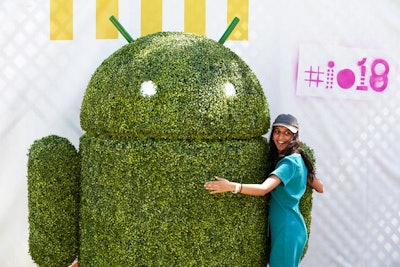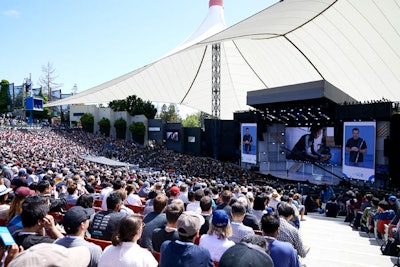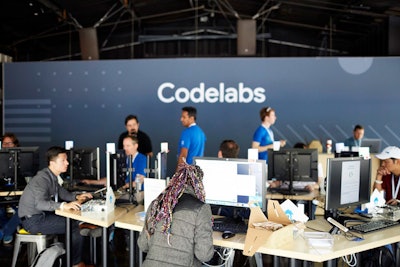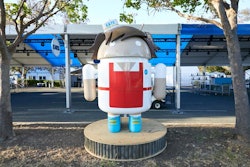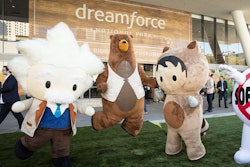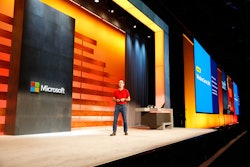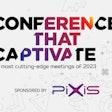Google’s annual I/O developer conference is no stranger to our list of innovative meetings due to its music-festival-inspired photo ops, out-of-the-box activities, and hyper-organized neighborhood design. And the 12th annual event, held May 8 to 10 at the Shoreline Amphitheatre in Mountain View, California, continued to perfect that process—and expand on it.
“This was our third year at Shoreline,” said Google I/O’s executive producer, Amanda Matuk. “The first year was an exploration of a new venue and a new property, and the second year was really a perfection of that. Then this third year was about growing and expanding the content.”
The main challenge of the 2018 event was to make it easy for the nearly 10,000 developers, partners, and staffers to navigate the sprawling event footprint, which grew even bigger this year after an expansion to a neighboring parking lot and the addition of a ninth stage.
The Google team—who worked with brand experience agency Sparks on event production—looked to Disney World and other well-trafficked amusement parks for inspiration. Colorful signage was displayed prominently throughout the venue, plenty of staffers were on hand for questions, and a single Main Street connected all areas of the conference.
[PULLQUOTE]
“Wayfinding was the most obvious and apparent thing from the minute you walked on campus,” explained Matuk, who noted that organizers this year really focused on leveraging every square inch of the venue. “Everyone understood exactly where they were and where they were going at all points in time.”
In fact, the digital version of the event map adjusted from day to night, ensuring that attendees knew where they needed to be both during the sessions and workshops and during the nighttime activities.
The conference also incorporated more information-sharing options this year: Attendees could scan their badges at any session to receive more information. “It was an opt-in, where you basically were digitally raising your hand to get more information on a given topic,” said Matuk. “We found a pretty high success rate in that, and we’ll be implementing it again in 2019 and beyond.”
The event expanded from a content perspective as well. With the main goal of educating—and celebrating—Google’s developer community, organizers added a new series of “inspiration sessions.“
"Those are the sessions where folks can come in and learn hardcore coding skills and get information from our new platforms and services, like Firebase and the latest updates to the Android operating system,” Matuk said.
The inspiration sessions also featured forums that were less technical, such as a discussion on how artificial intelligence will impact the healthcare industry. In another session, Black Panther producer Hannah Beachler spoke about designing for inclusion, while a third panel featured computer scientist John Hennessy discussing the future of computing.
In a decidedly more analog twist, this year’s event also saw an increase in shareable photo areas and activities. Popular photo ops included an eye-catching three-dimensional version of this year’s Google I/O logo, plus larger-than-life versions of Android mascot Bugdroid—including one made from greenery. Meanwhile, colorful stage backdrops complemented the year’s logo design with geometric, 3-D lines and circles. Tongue-in-cheek signage on the ground added a fun touch for the crowd of developers, including one that spelled out “I love you” in binary code.
And as in previous years, the conference incorporated music-festival-inspired elements, such as oversize Jenga and Checkers games, postcard-writing stations, arcades, magic shows, and more. There was even a moon bounce where attendees could unwind.
“Google’s responsible for more than just what happens in a technical sense in the tech industry,” noted Matuk. “We believe that we can build tools and platforms that enable people to change other industries in the world.”
Previous: #2 IBM Think
Next: #4 C2 Montreal
A version of this story appeared in the Winter 2018 issue of BizBash.
